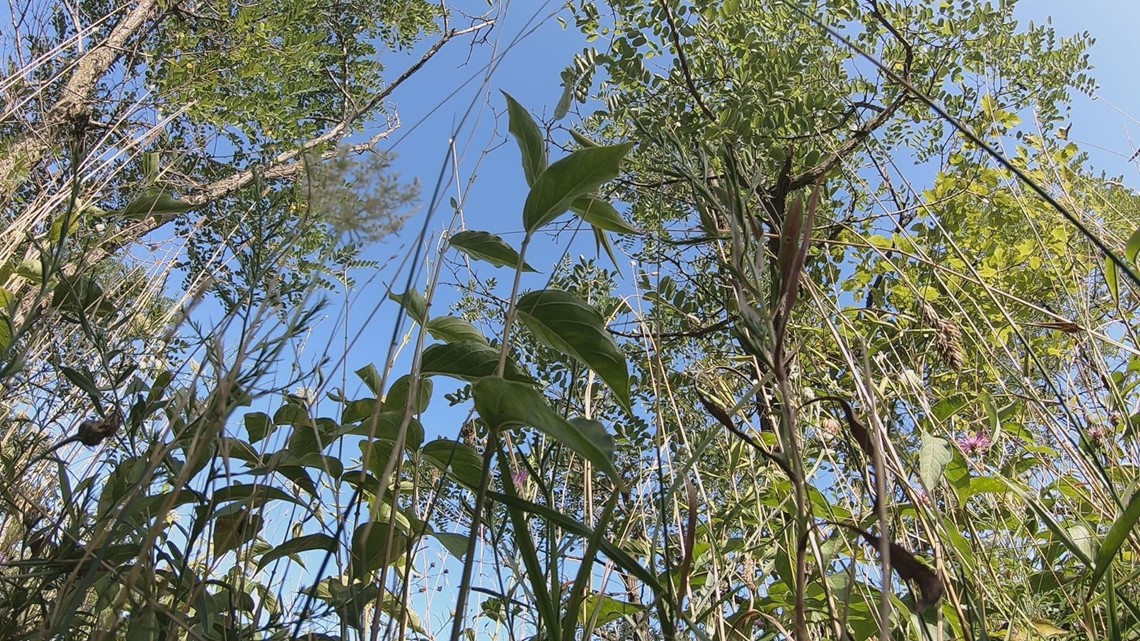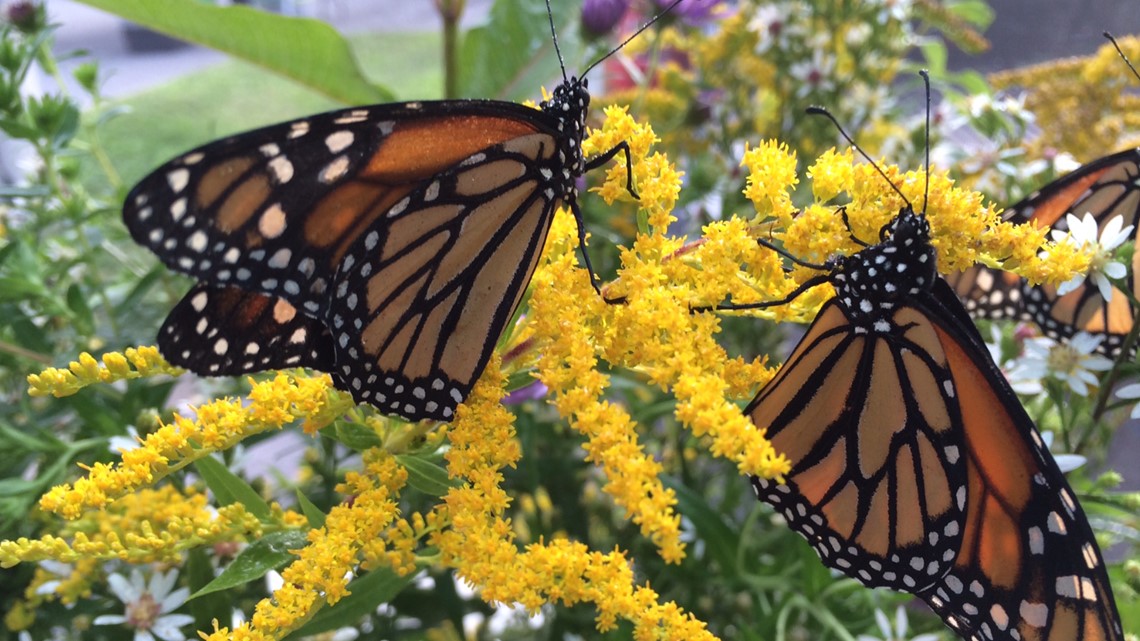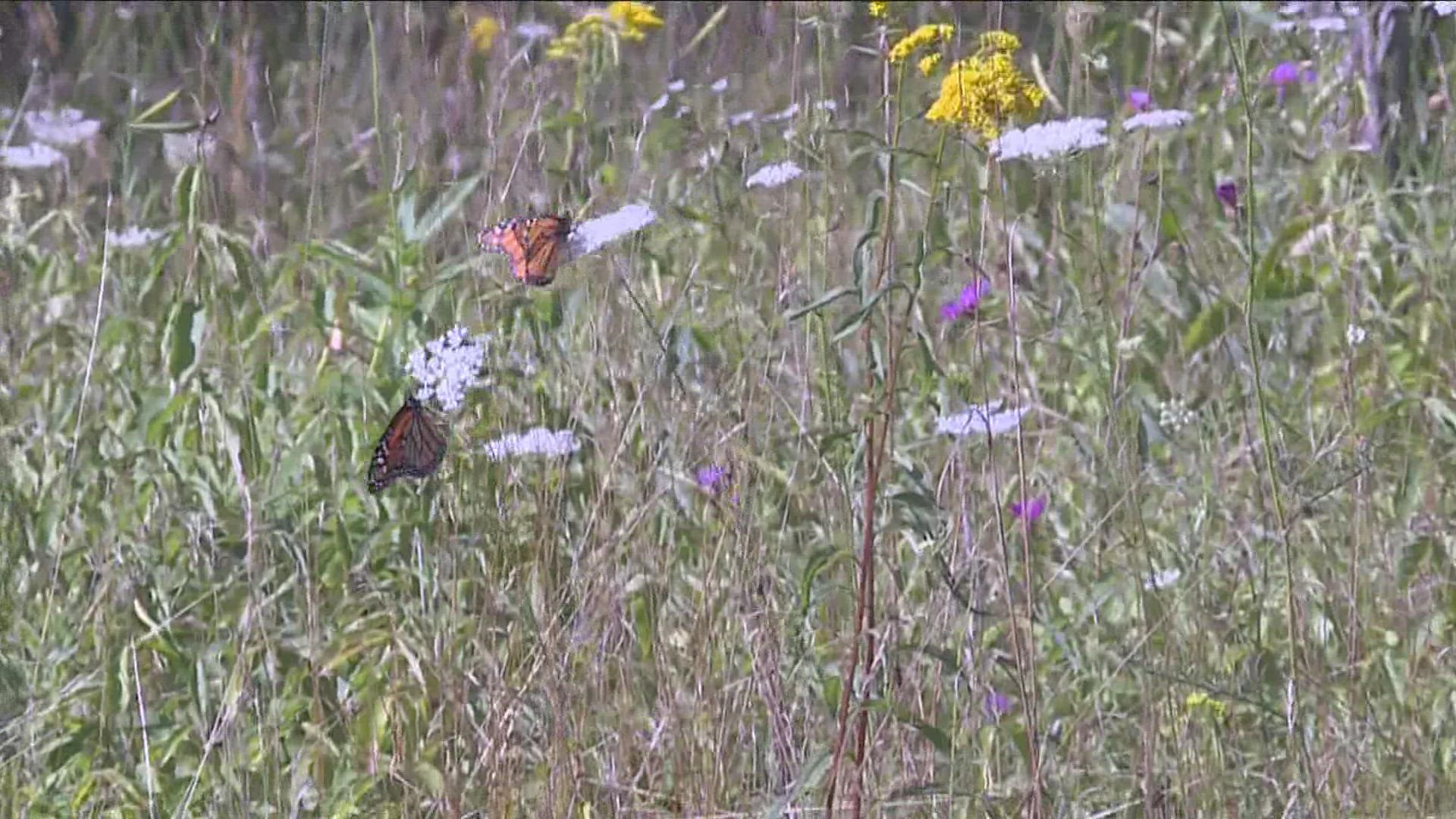CLARENCE CENTER, N.Y. — Pale and black swallow-wort were originally brought to the United States from Europe in the late 1800s as an ornamental garden flower. Benign for years, the invasive plant eventually got into the wild and is doing damage to native habitat throughout the northeast.
"It's not uncommon for some of these ornamental plants that have been around for hundreds of years to really just in the last few decades be able to get their foothold. And once they're established they're able to spread more readily," said Andrea Locke, coordinator for WNY PRISM, a watchdog group for invasives across the region.
Invasives are a lesson on the balance of nature. Once removed from their native habitat, invasives lose their natural predators and are able to spread unabated.


"The plants affects biodiversity, both plants and animals," Locke said. "It inhibits forest regeneration, it provides very poor forage for wildlife, and they are particularly harmful to areas with ground nesting birds."
Monarch butterflies, already on the endangered species list, are directly impacted by these plants.
"The problem with the black and pale swallow-wort is that it has many, many seeds in it's pods. And the other problem is, it's in the milkweed family, so it does trick monarchs basically, into laying eggs on this plant and the caterpillars will die because its toxic for them," said David O'Donnell, founder of Eastern Monarch Butterfly Farm.


The iconic but struggling butterflies are exclusively dependent on milkweed in the caterpillar stage. O'Donnell explains, "Between 10 and 25 percent of monarchs around the country will mistakenly put an egg on this black swallow-wort, and then that's just another problem for the monarch butterfly."
Swallow-wort can also make the surrounding soil toxic to native plants, inhibiting their growth, and are very difficult to remove. There is hope that a non-native moth, hypena opulenta, may help inhibit the plant. But in the meantime, Locke says that the community can help in curbing the spread of this aggressive invader.


"As people are aware of the species, they can see it and they can just dig up a single plant, which keeps it from becoming a larger problem," Locke said.
O'Donnell agrees, "Stop buying things from nurseries in other countries that don't belong here, because this is a perfect example of how things escape and destroy our environment."
To learn more about monarch butterflies, visit the Eastern Monarch Butterfly Farm site here.
Learn more about swallow-wort here.
RELATED VIDEO:

